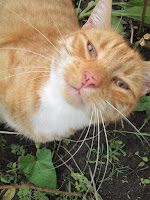The Positives and Negatives of Crate Training
The use of a crate to train your dog is now a very popular choice, and is used as a management tool to enable your dog to learn about the environment. This minimizes mistakes and sets the dog up for success.
If introduced properly the dog should:
- be happy and relaxed while in there
- feel it is a safe place to go.
Used in the correct way a crate is a temporary measure and can aid with:
- house training
- stopping the dog getting into mischief
- getting the dog used to isolation
- keeping them from getting over aroused with other pets
- stopping them developing bad habits
While there are many advantages of using a crate there are some disadvantages. Far too many dogs spend long periods of time in the crate without enough exercise or mental stimulation in between these periods, the crate then becomes a prison.
The crate should never be used as a way of punishing the dog, it will only create anxiety in the dog and cause further behavioural problems.
What type of crate should I use?There are several types of crate available such as fabric, these can be useful as they are mobile and can be used for dogs that are nervous in the car, they can block out the view and help some dogs with travel sickness.
Metal crates are most popular and come in a variety of sizes. They are much more durable and easy to clean.
The crate should be large enough for a dog to be able to stand comfortably and turn around. It should allow for a bed and water bowl inside. This may mean people who own large breed dogs may need to replace the size of the crate as the dog grows.
Introducing the crate
Placement of the crate is important, unless you are working on some behavioural issue it should never be placed in an area where it is busy but preferably somewhere more quiet where the dog can rest.
Let the dog/puppy investigate the crate and praise any time the dog goes near the crate.
Leaving the door open throw food inside the crate and once going in reliably you can then add a cue such as ‘bed’ or any word you like followed by the food, if repeated enough the dog should go in on request.
Make all pleasant things happen in the crate by feeding meals in there and giving interactive toys such as the Kong range.
Only when the dog is going in and out by itself and settling down should you start to close the door, initially for a few minutes and gradually building up periods of time.
It can be useful to part cover the crate with a blanket this blocks out noise and can also make the dog feel safe.
If finances permit it can be useful to have two crates one in an area of low traffic this can help getting the dog used to isolation and prevent separation related issues in the future. The other crate can be put in the living room or another busy area. This way the dog gets used to seeing that in an evening, family members and other dogs settle down and there is little interaction, it can help with the dog settling and not pestering for attention.
When your puppy is in the crate it is best not to interact with it or this could start the cycle of pestering and being disruptive while in the crate.
As puppy gets older how you let him/her out of the crate can create bad habits so ensure that puppy is calm before letting out and eventually you can teach a ‘sit’ and ‘wait’ on request, this can then transfer to waiting at the door or the gate if going for a walk.
Can a dog spend too much time in a crate?
The short answer is ‘yes’ the crate is merely a tool to aid house training. Dogs must be given the opportunity to urinate and defecate at regular intervals and in between these times, it must be given the opportunity to explore the environment. Yes it will pick up things it shouldn’t do from time to time and it is our job to redirect them to something more appropriate.
Our dogs must be given appropriate exercise to meet it’s developmental needs. This can vary from breed to breed. In general unless there is a medical problem advised by your vet, periods no longer than three or four hours should be spent in the crate at any one time.
Dogs that spend too much time in a crate are not living their best life, they lack exercise and human interaction. This can have disastrous effects on the dog and can contribute to behavioural problems in the future such as frustration, anxiousness, depression and aggression.
Looking at it from our perspective, you wouldn’t want to spend all your time in one room. So it is very important that our pets get the opportunity to eat and drink, toilet, exercise, socialise and play in a varied environment.

















